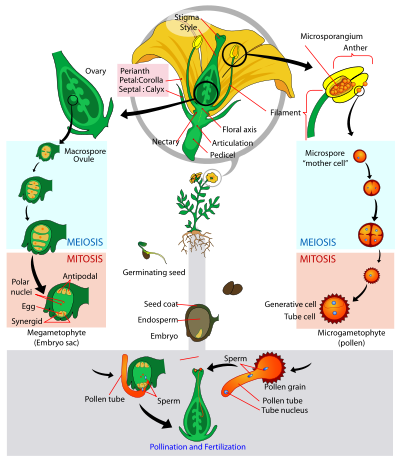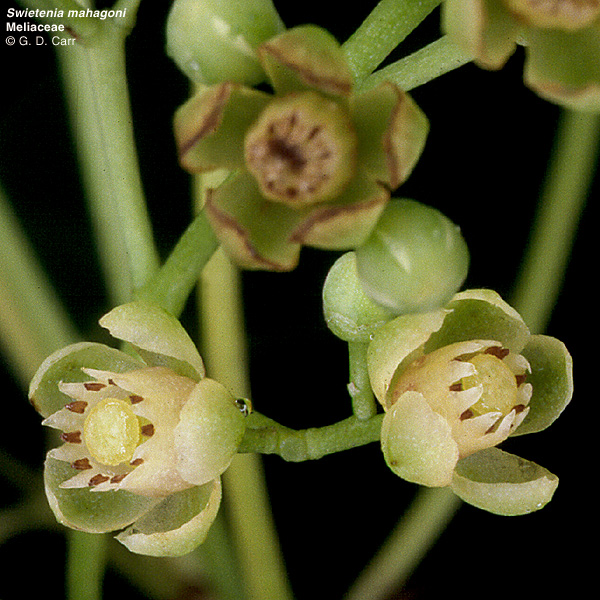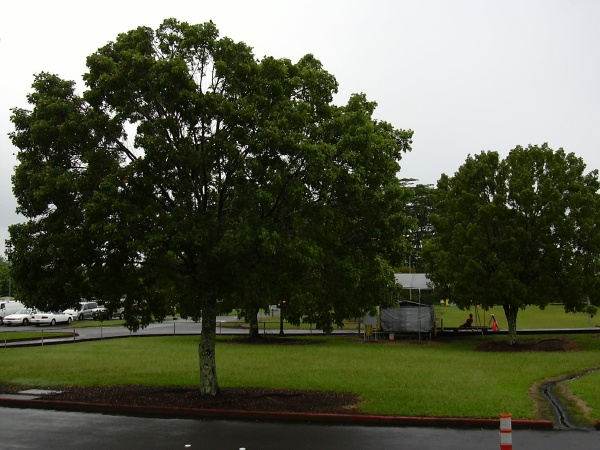
West Indies Mahogany: Reproduction
The diagram above is a representation of the life cycle of angiosperms. The life cycle of plants is defined by an alternation of generations. The mahogany tree alternates between a diploid and haploid stage. Starting on the left side of the diagram, it shows the development of a female gametophyte into an embryo sac. On the right side it shows a male gametophyte developing into a pollen grain (a plants sperm). The bottom shows fertilization occurring, in which a zygote is formed, and will eventually turn into a seed.
Perhaps one of the most important tasks for any organism is making sure it can effectively create a new generation. While reproduction is achieved differently in various organisms, the goal is the same; to achieve a means for the continuation the species.
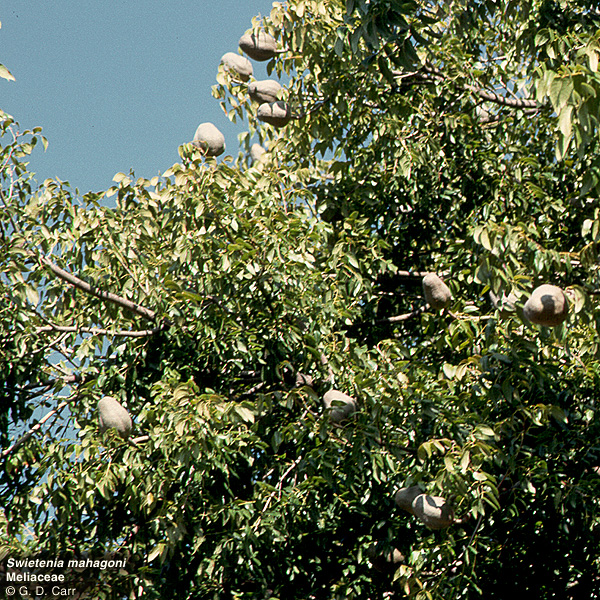
The flowers of West Indies Mahogany are unisexual and the trees are monoecious, (with male and female flowers present on a single tree). Flowering doesn’t begin until a tree reaches the age of 12 to 13 years 13.
The tree is nearly evergreen since old leaves are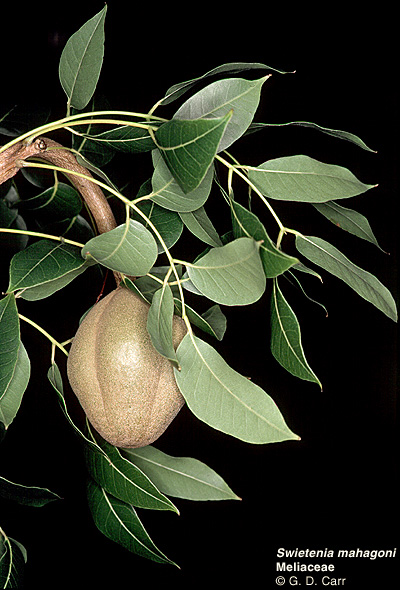 shed suddenly in spring
and replaced quickly with new ones. Greenish flowers are fairly discreet
and are followed by a large, brown pod. The fruit is a large, brown capsule containing
varying amount of seeds from year to year. The seedlings produce a
strong tap root (which is characteristic of Dicots) and are intolerant
of shade.
shed suddenly in spring
and replaced quickly with new ones. Greenish flowers are fairly discreet
and are followed by a large, brown pod. The fruit is a large, brown capsule containing
varying amount of seeds from year to year. The seedlings produce a
strong tap root (which is characteristic of Dicots) and are intolerant
of shade.
Pollination
Thysanoptera (see below) were the only insects found to be associated with the
flowers of the Mahogany tree. The thrips were
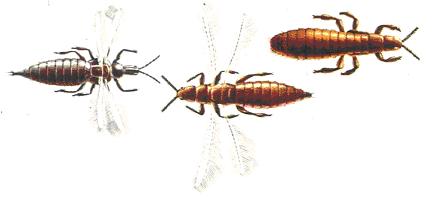 observed
inside the staminal tube, located in the flowers of Swietenia mahagoni, where there was abundant pollen. Most thrips
sampled had mahogany pollen adhering to them1.
These little critters are important for cross-pollination from tree to
tree, allowing for a more diverse genetic combination of potential
offspring. Continue reading to find out what pollen is responsible
for in plant reproduction.
observed
inside the staminal tube, located in the flowers of Swietenia mahagoni, where there was abundant pollen. Most thrips
sampled had mahogany pollen adhering to them1.
These little critters are important for cross-pollination from tree to
tree, allowing for a more diverse genetic combination of potential
offspring. Continue reading to find out what pollen is responsible
for in plant reproduction.
The mahogany tree’s seeds are wind distributed, aided by their structure,
known as wind propagules, which tend to glide in long lines,
powered by gusts. Seeds are products of fertilization from the pollen
(sperm) of one tree, to the female gametophyte (egg) of another tree. It's
time you learned about the birds and the bees; this is where baby trees
come from.
The seed of the Mahogany tree is the second from the left.
